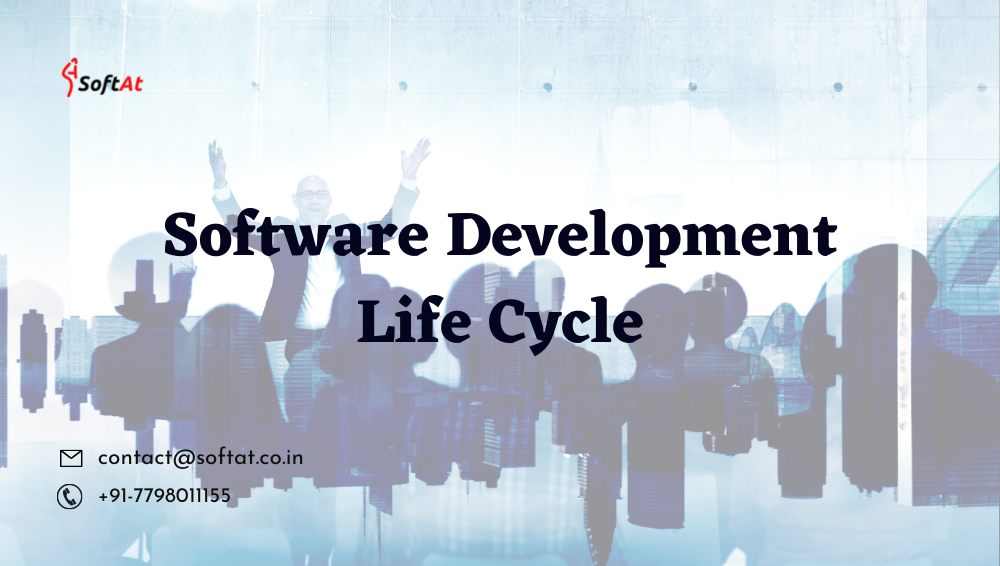What is SDLC?
SDLC stands for Software Development Life Cycle, and it is a method for developing software that ensures its quality and correctness. The SDLC process is designed to develop high-quality software that fulfills customer requirements. The system development should be completed within the schedule and budget constraints. SDLC is a step-by-step process that outlines how to plan, construct, and maintain software. Each phase of the SDLC life cycle includes its own set of processes and deliverables, which feed into the next. The Software Development Life Cycle (SDLC) is also known as the Application Development Life Cycle (ADLC).
Why SDLC?
The following are some of the most essential reasons why SDLC is crucial while designing a software system:
- It serves as a foundation for project planning, scheduling, and costing.
- Provides a framework for a group of activities and deliverables that are all the same.
- It’s a system for keeping track of and controlling projects.
- Increases the visibility of project planning to all development process stakeholders.
- Speed of development has been increased and improved.
- Client relationships have improved.
- Assists you in lowering project risk and reducing project management plan overhead.
What are the 7 phases of the software development life cycle?
- Planning
- Defining
- Designing
- Developing
- Testing
- Deployment
- Maintenance
1. Analysis and Planning:
This is the most important step in the SDLC process. A business analyst, domain expert, and project manager compile and analyze business requirements. To generate the business requirements document, the business analyst engages with stakeholders. They also create use cases, which they communicate with the project team. The requirements analysis is used to ensure quality, determine technical feasibility, and identify any hazards that must be addressed in order for the software to succeed.
2. Defining Requirement gathering:
If you don’t know what the problem is, it’s tough to come up with a solution. It is the procedure for gathering needs.
Techniques for gathering requirements include:
Questionnaires: Come in handy when we need to collect information from dozens, hundreds, or even thousands of people.
Interview with the client one-on-one: Sit down with the client and ask them what they require.
Group Interviews: To obtain a more comprehensive list of requirements in a shorter amount of time. In most cases, 4 to 6 people are involved.
Facilitated Session: Gather a set of common criteria from a group more quickly than interviewing each person individually.
3. Designing the architecture of the product:
Lead developers and technical architects construct the initial high-level design strategy for the software and system throughout the design phase. This includes delivering the requirements for the Design Document Specification (DDS). This paper outlines the database tables that will be added, the new transactions that will be established, the security processes that will be implemented, as well as the hardware and system requirements.
4. Developing and coding:
The database administrator creates and imports the appropriate data into the database during this step. Requirements are what define programming languages. Developers design the user interface and unit test it according to the coding rules. For developers, this is a crucial stage. If the business analyst makes any modifications, they must be open-minded and adaptable.
5. Testing:
Testers check the software against the requirements to ensure that it addresses and solves the problems identified during the planning process. All tests, including unit testing, integration testing, system testing, acceptance testing, and non-functional testing, are conducted as functional testing.
6. Deployment:
The software is deployed once it has been certified and no bugs or mistakes have been found. The software may then be distributed as is or with suggested enhancements in the object part, depending on the results of the assessment. After the software has been deployed, it must be maintained.
7. Maintenance:
The system is in maintenance mode in a post-production, live software environment. Issues will arise regardless of the number of users, the sophistication of the software, or the thoroughness of the QA testing. That’s the nature of software when it comes to data management, integration, security, and real-world application. It’s critical to have access to competent, dependable support services, as well as routine maintenance and remaining current on upgrades.
Which model is best in SDLC?
The Software Development Life Cycle (SDLC) is a process followed by software development teams to plan, design, build, test, and deliver high-quality software products. There are several different models in SDLC, and the best one depends on various factors such as project requirements, team size, complexity, and customer needs. Here are a few popular SDLC models:
- Waterfall Model: This is a linear and sequential model where each phase is completed before moving on to the next one. It is suitable for projects with well-defined requirements and stable environments.
- Agile Model: Agile methodologies, such as Scrum and Kanban, focus on iterative and incremental development. They prioritize adaptability, customer collaboration, and quick feedback. Agile is best suited for projects with rapidly changing requirements or when the end goal is not clearly defined initially.
- Spiral Model: The Spiral model combines elements of both waterfall and iterative approaches. It emphasizes risk analysis and mitigation throughout the development process. It is suitable for large and complex projects that require frequent evaluations and adjustments.
- Iterative Model: In the iterative model, development is divided into small iterations or increments. Each iteration includes the requirements, design, coding, and testing phases. It allows for flexibility and progressive refinement of the software.
- V-Model: The V-Model is an extension of the waterfall model, where testing activities are associated with each phase of the development process. It emphasizes early test planning and execution. It is suitable for projects that require strong verification and validation processes.
The best model for a specific project depends on the project’s unique characteristics and requirements. It’s important to consider factors like project size, complexity, flexibility, and customer involvement while selecting an SDLC model. Many organizations also adopt hybrid approaches by combining different models to meet their specific needs.
Popular Models
Here are the most popular models of Software Development Life Cycle (SDLC):
1. Waterfall Model in SDLC
The Waterfall Model is a well-known SDLC model. The entire software development process is separated into multiple SDLC phases in this method. The output of one step serves as the input for the following phase in this SDLC architecture.
This SDLC paradigm is heavily documented, with early phases detailing what has to be done in later phases.
2. Incremental Model in SDLC
It is important to note that the incremental approach is not a stand-alone model. It simply comprises a series of waterfall cycles. At the outset of the project, the needs are separated into categories. The SDLC paradigm is used to design software for each group. The SDLC life cycle is repeated, with each release adding new functionality until all requirements have been met. Every cycle in this strategy serves as a maintenance period for the preceding software release. The incremental model has been modified to allow development cycles to overlap. After that, a new cycle may begin before the preceding one has finished.
3. V-Model in SDLC
The phases of testing and development are planned in simultaneously in this form of SDLC architecture. So, on one hand, there are SDLC verification phases, and on the other hand, there are SDLC validation phases. The V-Model joins during the Coding process.
4. Agile Model in SDLC
An agile approach is a technique that encourages continuous interaction between development and testing throughout a project’s SDLC lifecycle. The entire project is broken into small incremental builds using the Agile technique. These builds are delivered in iterations, with each one lasting one to three weeks.
5. Spiral Model
The spiral model is a process model that is driven by risk. This SDLC testing model assists the team in incorporating elements from one or more process models, such as waterfall, incremental, waterfall, and so on.
This methodology combines the best aspects of both the prototyping and waterfall models. Rapid prototyping and concurrent design and development activities are combined in the spiral process.
6. Big Bang Model
With no or very little planning, the big bang model focuses on all forms of resources in software development and coding. When the needs arrive, they are comprehended and implemented.
This paradigm is best suited for small projects with a small development team that collaborates. It’s also valuable for software development initiatives in academia. It’s a good model to use when the requirements aren’t understood or the final release date isn’t known.





